1. About Chiang Mai:
Chiang Mai is a northern province and the second-largest province of Thailand. About 800 kilometers from the capital of Thailand, Bangkok, Chiang Mai is immersed in an ancient, quiet, and peaceful look. This place was once the capital of the Lanna Kingdom (1296–1768). When you come here, you will be attracted by the ruins of old architecture and the remains of temples and shrines of a once glorious empire.
Traveling to Chiang Mai is always the first choice of tourists when coming to the land of the Golden Temple. The city is packed with tourist attractions in terms of shopping, outdoor activities, beautiful temples, and cultural exploration, with different ideal visiting times for each activity.
Chiang Mai is a popular destination for tourists year-round. The city offers a variety of activities, festivals, and great weather, making it an ideal destination for those looking to vacation in a warm climate.
See more:
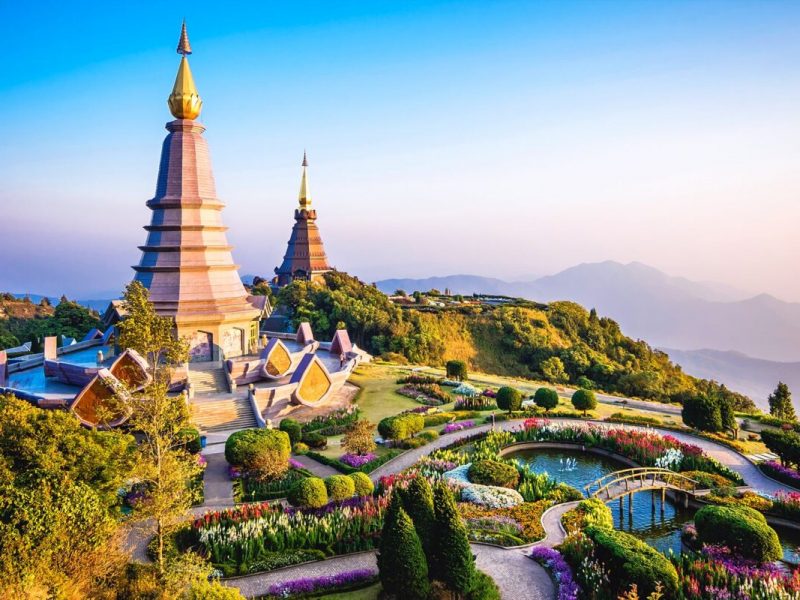
2. The best time to visit Chiang Mai with great weather
Located in the mountainous region of Northern Thailand, Chiang Mai’s climate is very seasonal, with temperatures reaching up to 40°C in summer and dropping below 10°C in winter. Compared to Bangkok and other southern Thai cities, Chiang Mai is slightly cooler and has a lower relative humidity. In general, Chiang Mai has three main seasons: the cool season (November to February), the hot season (March to May), and the rainy season (June to October).
2.1. Cool season from November to February
The cool season is the best time to visit Chiang Mai. Temperatures average 25 degrees Celsius and drop to 13 degrees at night. Sunny weather and a clear blue sky in the cool season. In particular, you can see cherry blossoms here from late December to February next year. Wild Himalayan cherry trees usually bloom in winter in Northern Thailand.
These months also have the lowest humidity, so there is little rain. This period is the most pleasant and popular with visitors due to the perfect weather, so this season has high tourist numbers and becomes the most expensive.
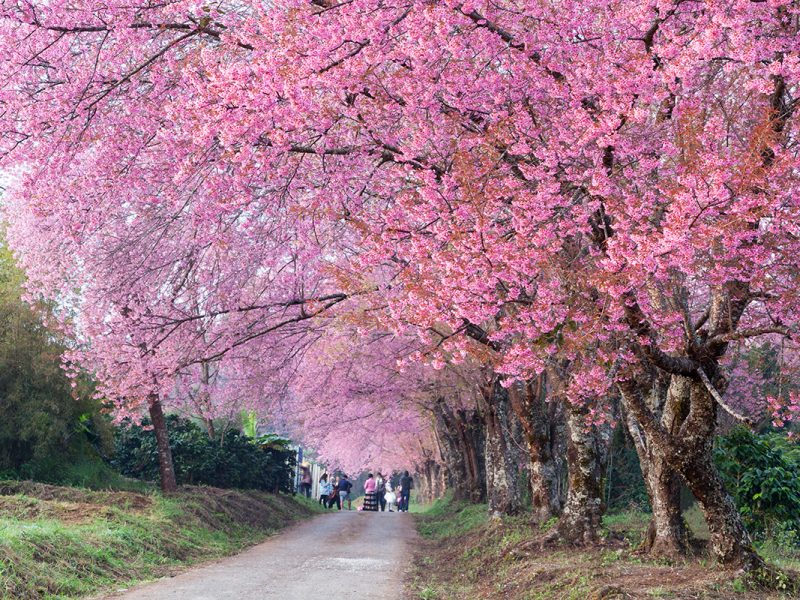
2.2. Hot and smoky season from March to June
Smoke season occurs every year in Thailand and surrounding countries. This season is the hottest; the midday temperature often exceeds 32 degrees Celsius. April is the hottest time; daytime temperatures can rise up to 40 degrees C.
At this time, the air at the tourist destination is quite polluted due to forest fires, and farmers burn rice straw to prepare a new crop. Fires cause smoke, dust, poor air quality, and obstruct the view of visitors.
Many foreigners and tourists leave the North during this season to enter the South because the air is fresher, so this season is usually the slowest. Many people advise against coming here to travel in March and April.
2.3. Rainy season from July to November
The rainy season in Chiang Mai has a much milder temperature than the hot season, ranging from 25 to 35 degrees Celsius, although it is much more humid. It rained almost every day, but rarely all day. Usually, storms last several hours, and the rest of the day is dry to enjoy. This time of year is an ideal time for those who are looking for a less busy season with a little rain to experience the lush green of northern Thailand’s jungle.
The natural attractions are perfect and picturesque during the rainy season. This is the time of year when mangrove vegetation and rice fields are at their best. Some of the most delicious exotic fruits are in season, the flowers are in full bloom with butterflies, and the waterfalls—often drinking in the dry season—are the most impressive of the year.
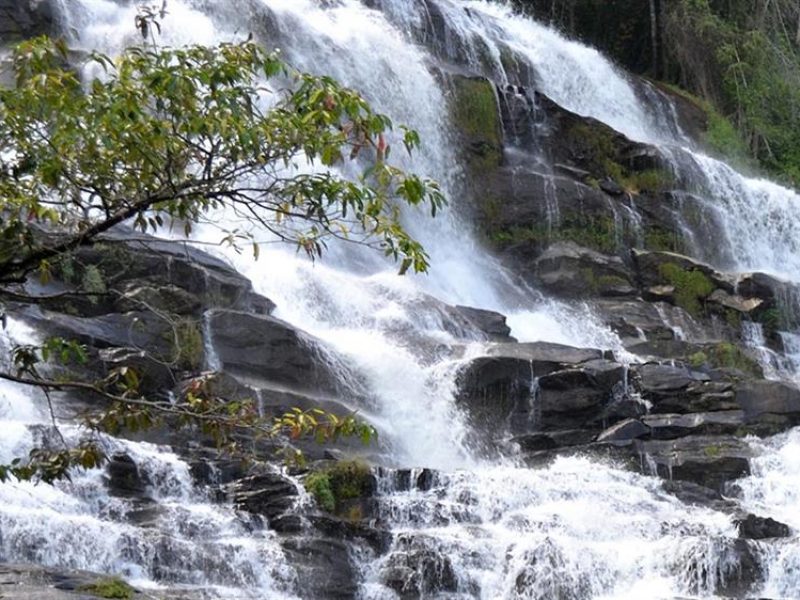
3. The best time to travel to Chiang Mai, the season of traditional festivals
3.1. Loy Krathong Festival and Yi Peng Festival
Loy Krathong (Festival of Lanterns) and Yi Peng (Festival of Sky Lanterns) are held on the full moon day of the 12th lunar month according to the Thai calendar. Usually, this time falls between mid-October and mid-November and lasts for several days.
Participating in the Loy Krathong festival, you will have the opportunity to experience the release of lanterns along the riverbanks in Chiang Mai, with the meaning of praying for peace and luck. In particular, during the festival, in addition to releasing Krathong lanterns, Chiang Mai also organizes many side activities such as fireworks, parades, boat races, lantern contests, Miss Nopphamas beauty contests, and gender pavilions. introduce traditional Thai cuisine and special cultural performances.
During the Yi Peng festival, locals and visitors will release sky lanterns made from paper and bamboo into the sky to pray for peace and luck. The moment the whole sky is lit up, thousands of sky lanterns are floating, creating a surreal beauty that no visitor can forget.
See more:
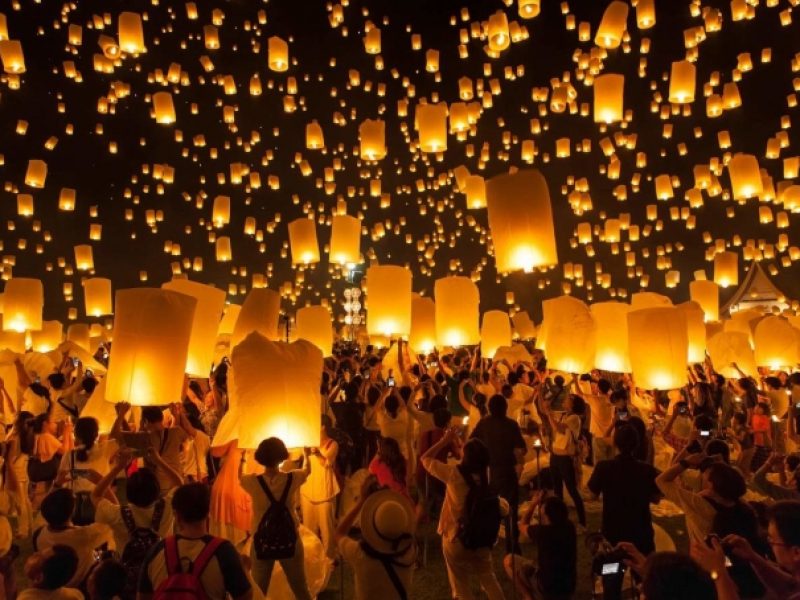
3.2. Chiang Mai Flower Festival
Held in February every year, the Chiang Mai Flower Festival brings thousands of colorful flowers, models, and boats decorated with flowers that are paraded through the streets. In addition, the festival is also home to a beauty contest, with hundreds of beautiful girls performing in impressive floral dresses.
Participating in the flower festival, you can also experience the traditional culture of Chiang Mai in particular and the Thai people in general, or choose for yourself souvenirs only available at the Chiang Mai flower festival.
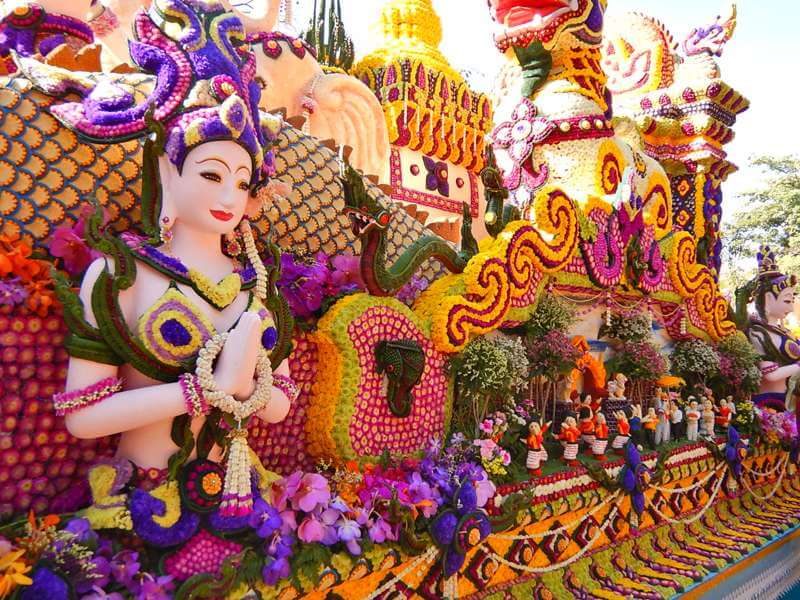
3.3. Songkran Water Festival
The Songkran Water Festival, also known as the traditional Thai New Year, is held across the country from April 13 to 15 every year. At the Songkran festival, people often splash water on each other with the meaning of washing away the bad luck of the old year and welcoming the new year with many new and lucky things.
You can freely play in the water, play with friends and family on all the streets of Thailand, etc. This water festival is also an opportunity to make friends and interact with the friendly Thai people, who are hospitable to tourists around the world.
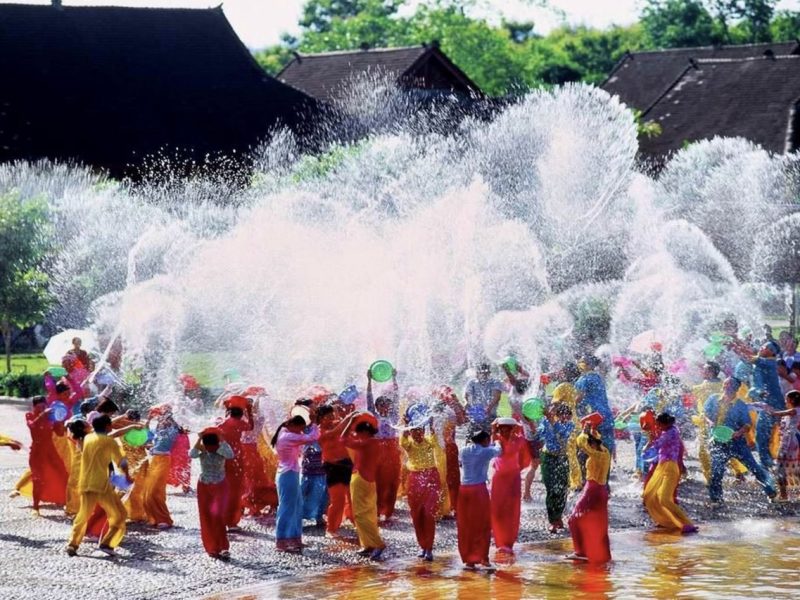
4. The best time to travel to Chiang Mai during tourist season
4.1. Peak tourist season in Chiang Mai: November–February
Because of the ideal weather of this season, thousands of tourists flock to Thailand with its warm climate for relaxation and tourism. Chiang Mai is known for being one of the coolest places in Thailand during these months, so many locals and visitors come to experience Thai winter in the mountains. With a large number of tourists, prices during this season are the highest. During the high season, most events and festivals take place throughout Chiang Mai.

4.2. The low tourist season in Chiang Mai is from March to August
The beginning of the hot summer months, together with the beginning of the bushfire season, resulted in a much slower arrival of visitors to the city. The monsoon season followed, ending the wildfires but bringing major storms almost daily.
If you are looking to visit Chiang Mai during the low season, you should wait until late April or June to avoid the dangerous atmosphere. In low season, there will be fewer tourists, and accommodation and flight prices will drop. This is the best time to visit Chiang Mai on a budget.
4.3. Shoulder Season in Chiang Mai
Chiang Mai has two shoulder seasons: May to June and September to October. These months are the “shoulder season” for tourism in Chiang Mai. The months between the main seasons are the best time for travelers looking to avoid the huge tourist crowds at a more reasonable price.
May to June is the end of the hot summer and is an ideal time to visit Chiang Mai before the school holidays begin. September to October is the end of the rainy season, which means you will experience the lush forest of the surrounding mountains and fresh air. These months are right before the spike in visitors during peak season.
5. Popular attractions in Chiang Mai
The city of Chiang Mai has many scenic spots, harbors, and architectural works rich in cultural, historical, and spiritual values. Sights not to be missed when traveling to Chiang Mai: Wat Phrathat Doi Suthep, Wat Chiang Man, Wat Chedi Luang, Doi Suthep-Pui National Park, Mae Sa Elephant Camp, Night Bazaar, Bao Art in Paradise Chiang Mai, Summer Palace-Phu Ping Palace, Karen Long Neck, Cactus Nursery, etc.
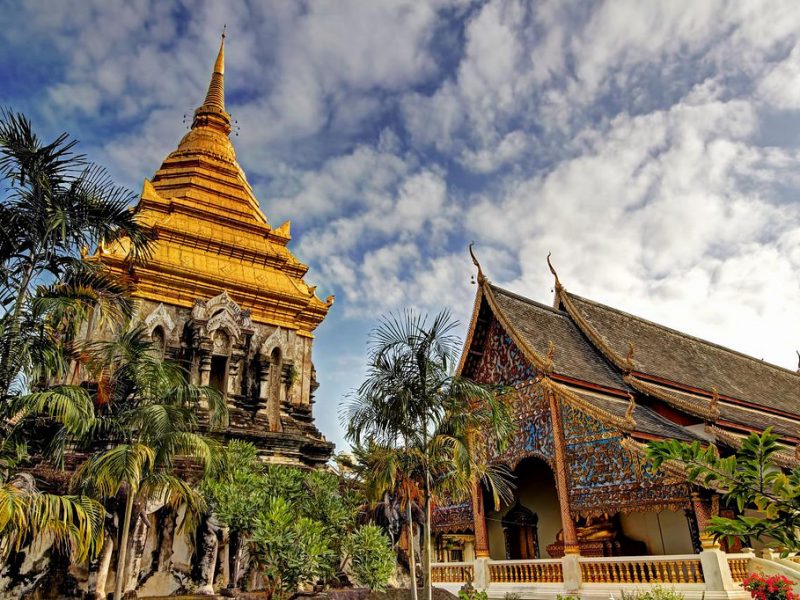
6. What to eat in Chiang Mai
Chiang Mai is also famous for attractive dishes such as the coconut-flavored Khao Soi noodles only available in Chiang Mai, the fragrant Sai Oua sausage with lemongrass and chili flavor, Gaeng Hang Lay, a spicy curry served with rice, etc. All of these special dishes you can find on the streets here or at the local markets, or if more luxurious, the restaurants on the street or in the commercial center will serve them. You follow Thai standards.
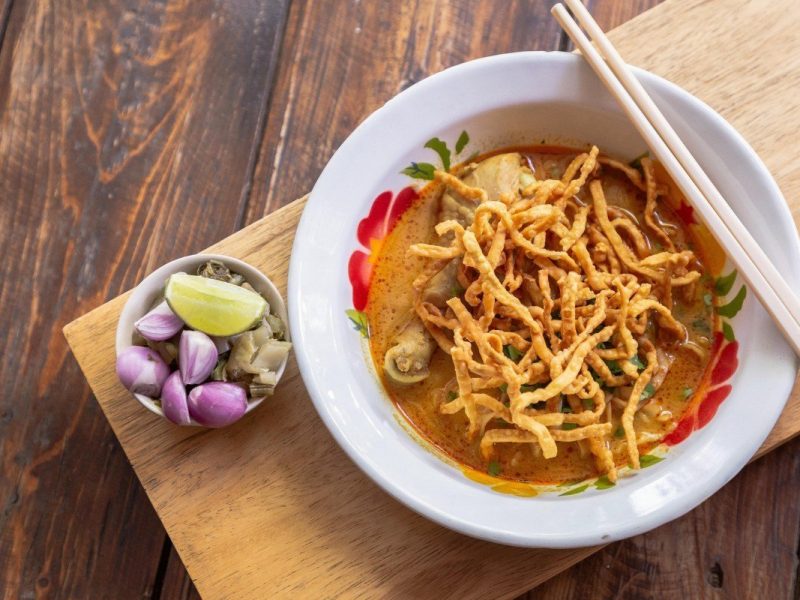
7. Things to prepare for and note when traveling to Chiang Mai
Before traveling to Chiang Mai, visitors should find out which season to travel to Chiang Mai and, depending on the climate, prepare appropriate clothes. You should prepare comfortable clothes for walking and 1-2 discreet clothes to visit the temple.
During the water festival, do not splash water on monks, children, or traffic controllers. You should also only splash clean water on others and laugh when others splash water on you. When attending a flower festival, you should not arbitrarily pluck decorative flowers or litter the street.
8. Conclusion
Above are the suggestions on the best time to visit Chiang Mai that Metta Voyage shares with you. Metta Voyage hope you have more great tips to explore this land to the fullest.
9. Contact us
Website: www.mettavoyage.com
Email: info@mettavoyage.com
Hotline 24/7: + 84 989 383 572

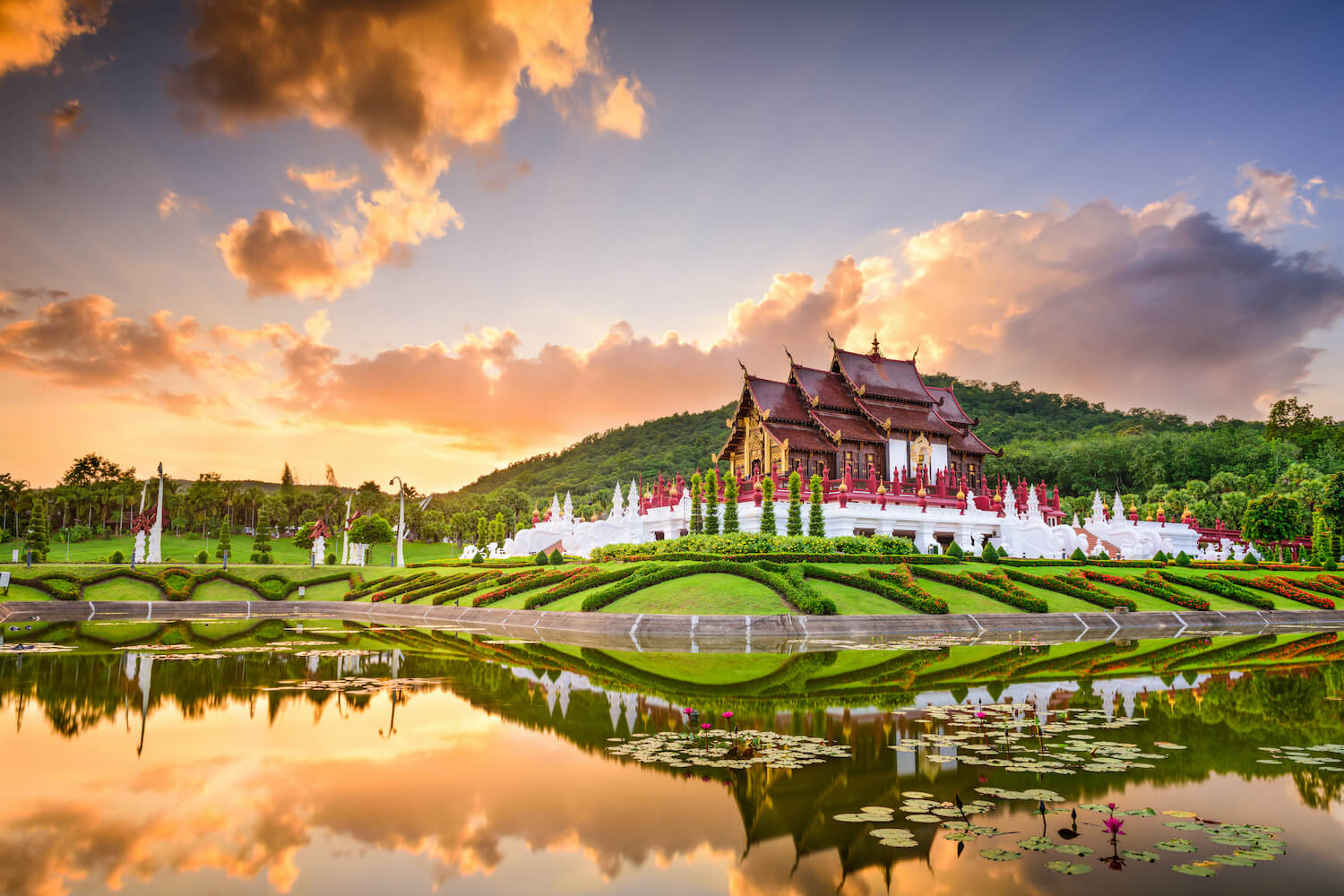

0 Comment